In addition to being an excellent leg workout, it is a variant of the squat that is widely used for increasing muscle and strength in the legs. The quadriceps are the primary muscle targeted during the sissy squat, although the hamstrings, glutes, calves, and core is all worked as auxiliary muscles throughout the exercise.
This is a fantastic workout for people who do not like barbell squats or want a different leg exercise requiring minimal setup and is quick to do. The sissy squat is also a beneficial exercise since it requires you to stabilize your body to complete the action correctly.
Squatting with your heels is not required for the sissy squat, which means that you must squat with the balls of your feet instead. This is what distinguishes this workout from others while also making it very effective.
How’s The Sissy Squat Performed?
Since squats are such an excellent compound exercise, there are a plethora of various variants available. When you thought you’d heard every possible option, well, hey, there’s still another one to consider!
Any functional body exercise that works and involves as many muscle groups as this one is worth its reputation. The squat accomplishes all of the goals above and may assist you in increasing lower body strength and endurance while also activating important stabilizer muscles such as the core.
By making tiny adjustments to the action, such as changing the posture, the resistance, or the direction, the target muscle group alters, allowing you to activate more of a specific region than you would with the conventional form.
That is precisely what the sissy squat is intended to do. Let’s get to know each other better.
What’s The Squat Sissy?

It’s the ultimate squat variant that emphasizes the quads! They are excellent for building strong quadriceps while also helping to improve core stability and balance due to their use.
The Sissy Squat, which was named after King Sisyphus, originally appeared in a Greek mythology tale in which the character Sisyphus appeared.
According to mythology, King Sisyphus was sentenced to move a massive rock up a steep mountain as a punishment from Zeus for his sins. Incompletely aware that Zeus had charmed the boulder in such a manner that it would roll away from Sisyphus before he reached the summit of the mountain, King Sisyphus spent the better part of his eternity attempting to move the rock to the discussion.

What is the point of telling you this? For the simple reason that you should see his quads! Sisyphus is shown with bulging thigh muscles in both ancient Greek and contemporary art.
For those who want your quads to appear as if they have been carved by gods, namely Greek gods, Sissy Squats are the workout you should attempt.
We can’t emphasize enough how difficult a Sissy Squat is – don’t be misled by the name of the exercise!
Because the motion is heavily reliant on the quadriceps to do the majority of the work, it is recommended that you begin by performing regular squats, lunges, and other quad-strengthening exercises.
If you believe you’re up to the task and want to see some severe quad growth, watch our how-to video and follow our step-by-step instructions on how to perform a Sissy Squat.
The Sissy Squat: How to Do It
Set-Up and Equipment:
Grasp a 3-inch high block or step (pretty much anything that can support your weight and will not move while you’re doing the activity would suffice; a dumbbell or a weighted plate would also work) and go to work. This will assist you in maintaining your ankles up during the exercise.
Starting Position:
- Place your feet shoulder-width apart on a block or a step, with your heels elevated on the block or stage.
- It would be best if you were standing with your toes on the floor and pointed straight ahead.
- Raise your hands to your hips and hold them there.
- Tilt your body backward, bending your knees slightly so that there is a straight line from your knees to your neck.
- Engage your core muscles; this will assist you in keeping your body upright.
Execution:
- Bend your knees and lean your body back into a squat.
- You should squat to the lowest point you can without losing your balance.
- Maintain the posture for three seconds.
- Raise yourself back up to your starting position by pushing yourself up.
- Repeat.
What Muscles Are Targeted By The Sissy Squat?
Sissy squats are about quads. This movement variant targets the quad muscles considerably better. The glutes and hamstrings are less engaged, and the whole stress falls on the upper thigh.
Also, utilize your core to stabilize and support the movement. To maintain a neutral spine and produce that straight line from the knees to the top of the head, you’ll need a solid core to assist. It’s all the muscles that wrap around the center of your body in your stomach, sides, and back.
Is It Harmful To Do Sissy Squats?
Sissy squats are very tough to do. If you’re not ready to take on the action, a sissy squat may overcompensate your knees or ankles in the movement, and you’re in danger of hurting your joints.
Make sure you construct a sissy squat if it’s something you’re searching for. First, develop strength in core and quads with various solo workouts. Leg presses and planks may be helpful workouts to help you get there safely.
Spend time focusing on your ankle and hip mobility with frequent workouts in these areas.
Before doing it unaided, using a sissy squat machine may be beneficial in supporting you while building yourself to the fullest.
Are Sissy Squats Beneficial To One’s Knees?
When your quadriceps muscles aren’t quite up to the task, your knees will bear the brunt of the force. It is possible to sustain severe harm if you do not exercise caution.
The idea is to start gently and gradually increase the intensity of the exercise. Pay attention to your mobility as well.
It is critical to prevent locking out your knee joint at the beginning of the action and maintain a gentle bend in it throughout the movement.
When you keep all of these considerations in mind, you should be able to successfully sissy squat without injuring your knees. If they begin to hurt, discontinue them immediately.
Is It Necessary To Use Weights While Doing A Sissy Squat?
A weighted sissy squat is yet another step forward in the development of an already very challenging exercise. It is typically performed only using one’s body weight since even this isn’t easy to perfect.
When taking this workout one step further, use great caution and make sure that your quad muscles are completely capable of handling the additional weight before continuing.
SISSY SQUAT IN ITS MOST SIMPLE FORM

The Sissy Squat is a simple exercise that requires just your body weight to be performed. Start with your feet shoulder-width apart (with the option of placing the heels of your feet on the edge of a 2”-4” step or block for added support). A 45-pound plate put on the floor may also be used for this purpose. First, stand with your back straight and one hand hanging onto the edge of a squat cage or any other piece of concrete equipment for support.
As the legs bend forward and the body tilts back, brace the core and take a deep breath in. From the top of the head to the bottom of the knees, the body will create a straight line. The upper body should be at a 45-degree angle to the floor while in this posture. At the bottom, you should feel a burning sensation in your quadriceps. Pull the knees in and raise the body back to the starting position to finish the rep.
How To Perform A Sissy Squat, As Well As The Advantages
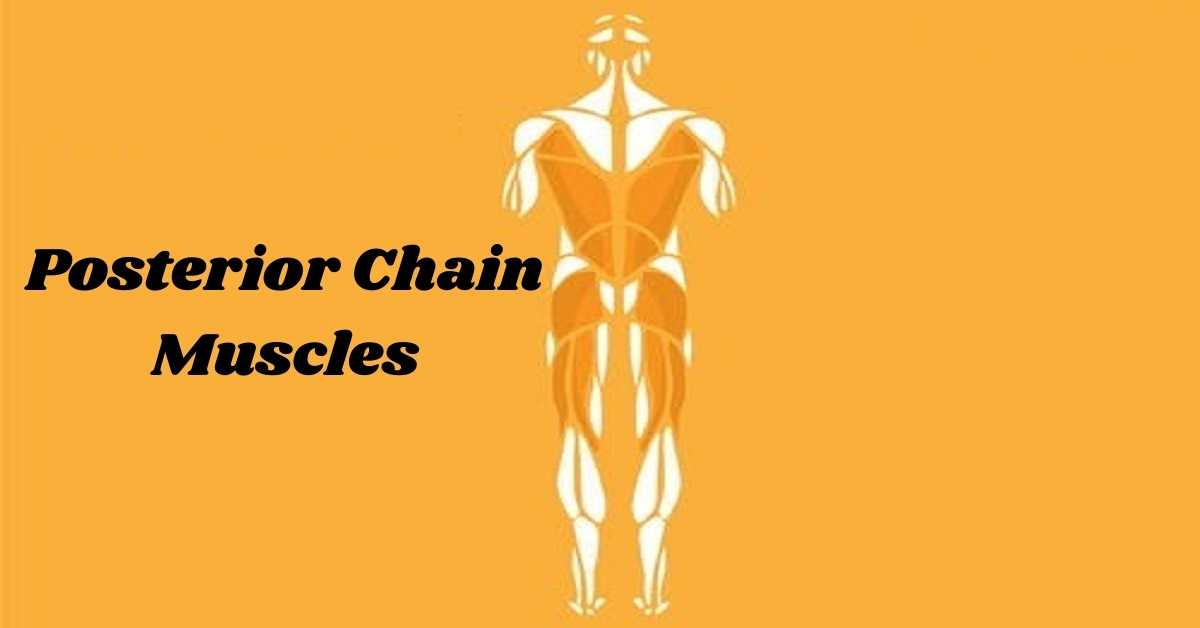
The posterior chain is a collection of muscles located on the rear of your body and helps to support your spine. The glutes, hamstrings, calves, and lower back muscles are among the forces that make up this group.
Squats, especially regular squats, are excellent for strengthening the muscles of the posterior chain. The Sissy Squat, on the other hand, is performed in such a way that these muscles are reduced to a supporting function. This posture compels the quadriceps to do the bulk of the effort to reduce the workload placed on the posterior chain muscles.
This implies that you will experience a significant amount of burn in the front of your thighs due to this workout, but it will be well worth it!
Increase The Strength Of Your Core

In addition to the obvious benefits for your quadriceps, the Sissy Squat has advantages for building core strength as well as for strengthening your legs.
Because the posterior chain muscles have a minor part in maintaining the straight-line posture, the core muscles must work harder to maintain the straight-line position.
Your core muscles are also engaged during this action, which helps to keep you stable and balanced as you push yourself back up from the squat.
The Move Can Be Modified To Meet Your Specific Needs
Because it takes powerful quad and core power to maintain the posture and perform the exercise correctly, Sissy Squats may be challenging to master at first. Sissy Squats are a variation of the traditional squat.
Because the exercise may be modified to make the motion simpler (or more complex) based on your quadriceps and core muscle power, the sissy squat is a good choice for those with varying levels of fitness.
Continue reading because we will describe how to do some simpler versions of the motion before moving on to how you may add more resistance to get the ultimate quad-killing effects by using more excellent resistance.
Sissy Squat With Assistance
If you believe you may have difficulty maintaining your balance throughout this exercise, it is recommended that you begin with an Assisted Sissy Squat. Here’s how to do it.
Setup And Equipment Requirements:
In addition to an elevated block, you’ll need something to hang on to for this variant to be successful. If you’re in the gym, look for the squat rack so that you can hang on to the beam as you work out. Anything solid, such as a table, would do if you want to work out from the comfort of your own home.
Starting Position:
- To begin, place your feet shoulder-width apart on the block with your heels elevated on the block. Your toes should be flat on the floor, facing straight ahead.
- Place one of your hands on your hip and the other on the beam, and hold on with the other.
- Tilt your body backward and gently bend your knees so that your torso creates a straight line with your legs.
- Tighten your abdominal muscles.
Execution:
- Sitting on the beam, crouch down by bending your knees and leaning yourself backward while holding onto it.
- Maintain the posture for three seconds.
- Raise yourself back up to your starting position by pushing yourself up.
- Repeat!
Sissy Squat was aided and assisted.
Another option for dealing with a fragile balance is doing the exercise on a Sissy Squat machine instead. Because it is more of a piece of equipment than a machine, we prefer to refer to it as a Sissy Squat Bench rather than a machine.
The bench is intended to hold the feet and ankles in place throughout the movement, allowing you to maintain your balance and prevent you from becoming concerned that you may fall backward!
Sissy Squat Weighted

The weighted Sissy Squat is an advanced variation of the fundamental exercise performed with a dumbbell or wheel pulled into your chest. At the same time, your other hand is fastened to a solid object for stability and support.
Okay, so you can manage Sissy Squat’s average body weight? Time to add additional resistance!
Setup And Equipment Requirements:
Again, you’ll need a block or step to keep your heels up throughout the exercise. Or do this on a Sissy Squat machine.
You’ll need some weight too! An ideal weight plate or dumbbell.
Starting Position:
- Separate your feet shoulder-width and stand partially on the block to elevate your heels and toes on the floor.
- Take the weight on top of your chest.
- If you find it hard to maintain your balance, use one hand to grasp the beam (like the variant above) and hold the weight.
- Like Sissy Squat, bend your knees slightly and tilt your body.
- Make sure your core’s engaged.
Execution:
- Bend your knees to lower your body while bending your torso rearward.
- Hold the squat for 3 seconds.
- Up to start position.
- Repeat.
That Is An Example Of Common Squat Mistakes That Must Be Avoided
Here are the top ten squatting errors individuals make, along with explanations as to why they are harmful and what you can do to prevent doing them.
Not Getting Down Low Enough.
1 OF 10
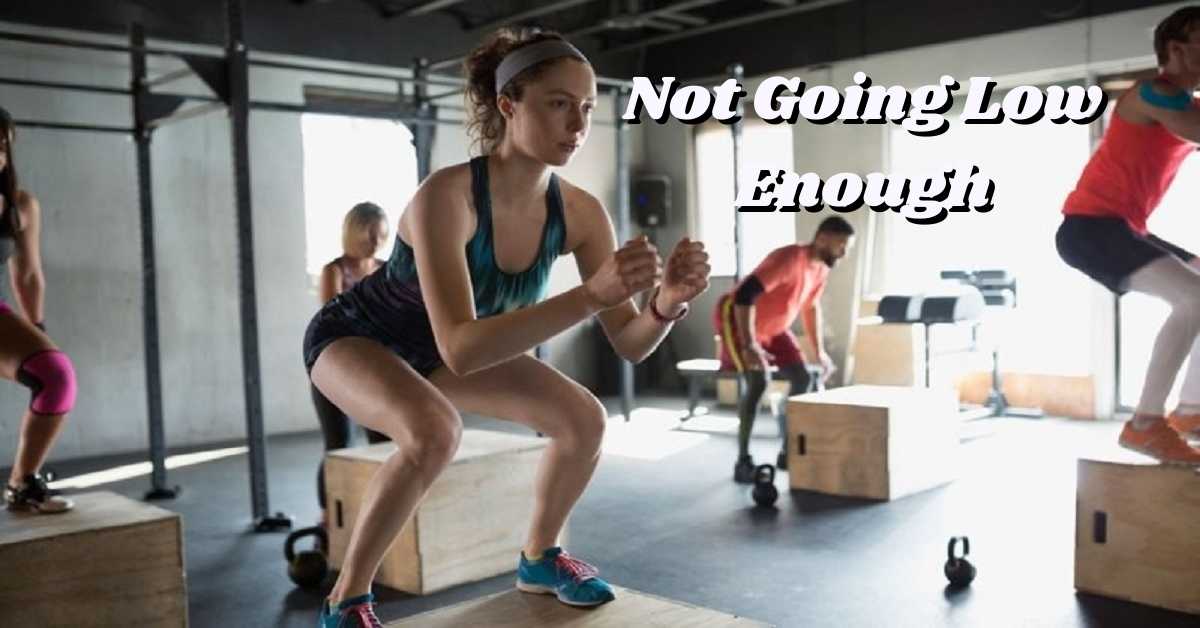
A disproportionate number of men continue to squat above parallel. Since it restricts your range of motion, it harms the strength and size you develop in your legs. Additionally, it is detrimental to your knees since the stress of the barbell will not transfer onto your hips until you reach parallel.
Forget the urban legend that parallel squats are harmful to your knees; it is entirely untrue. Moreover, a study conducted in Denmark discovered that deep squats improved quad size and strength much more than half squats did.
To avoid this, brace your core while you squat and make sure your thighs are parallel to the ground (or lower) when you reach the bottom. If you cannot squat so low, work on improving your hip mobility or switching to a simpler squat variant such as the Goblet Descend or Zercher Squat to maintain your torso straight while allowing you to squat deeper.
Bringing Your Knees Close to Your Chest
2 OF 10

When you squat, be sure that your knees do not fold inward. Your knees will be stressed, and the ligaments will be damaged as a result.
Instead, keep your knees pointing in the same direction as your toes at all times. Put a little band around each of your knees to push your legs to struggle against the resistance and engage the proper muscles to maintain your knees in alignment. If this does not work, try a mini-band around each of your knees.
Taking Off Your Heels
3 OF 10
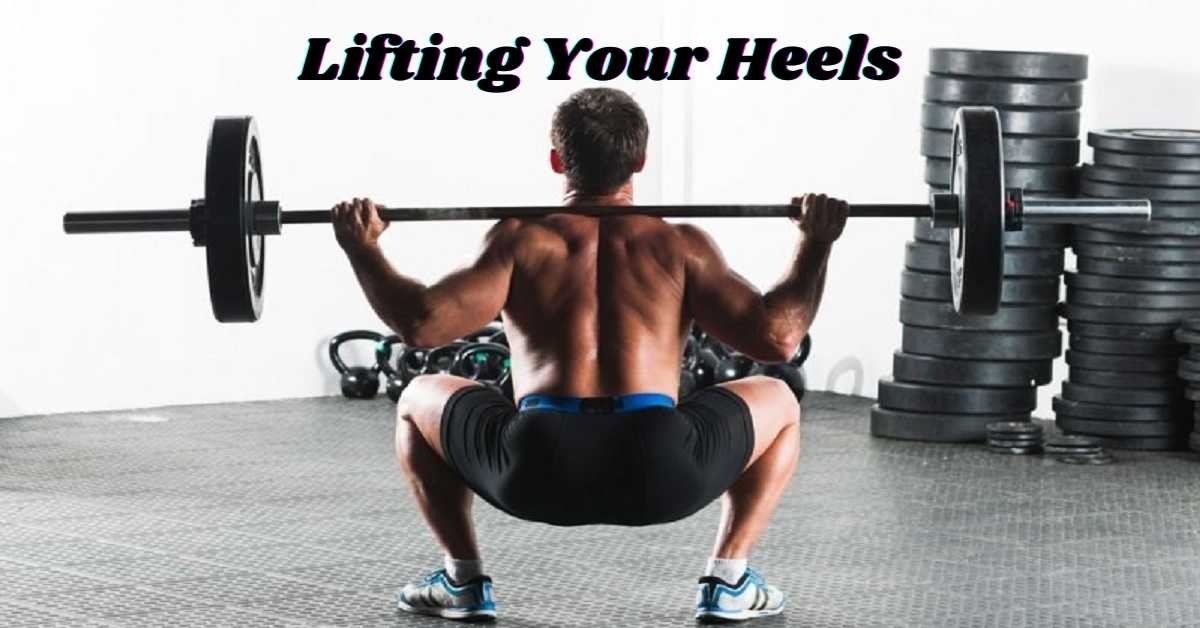
As they descend, it is common for men to raise their heels. This causes the weight to be shifted forward, increases the effort, and puts more strain on your knees. Instead, drive with your heels through the air. When squatting, curl your toes upwards to cause your feet to land on your heels as a temporary remedy. In addition, include additional ankle mobility exercises in your warmup since rising heels may indicate stiff ankles, which should be addressed.
Using the Same Squat Variation Over and Over
4 OF 10
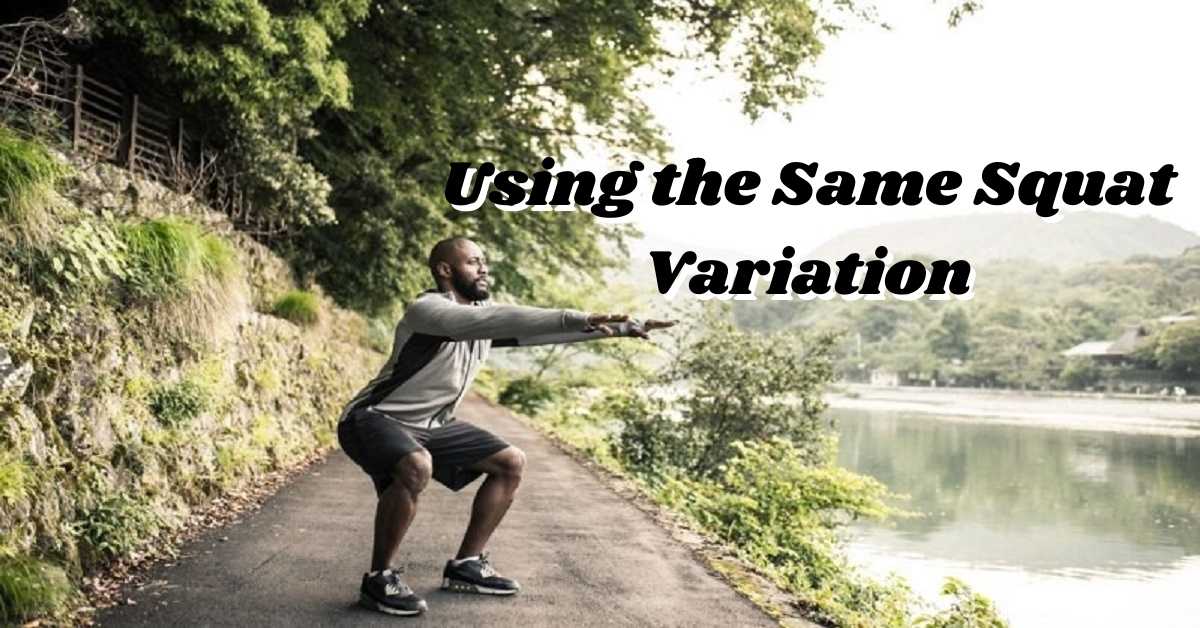
Doing just one kind of squat is not as effective as cycling among the hundreds of variants available to target various muscles and prevent plateaus.
To increase core activation, strengthen your quadriceps, and decrease stress on your lower back, try switching your back squats with goblet squats for a few weeks. You’ll see results! Use Anderson Squats to improve your squat poundage by developing your drive from the bottom and increasing your pure power at the top.
Not Making Use of the Safety Bars
5 OF 10
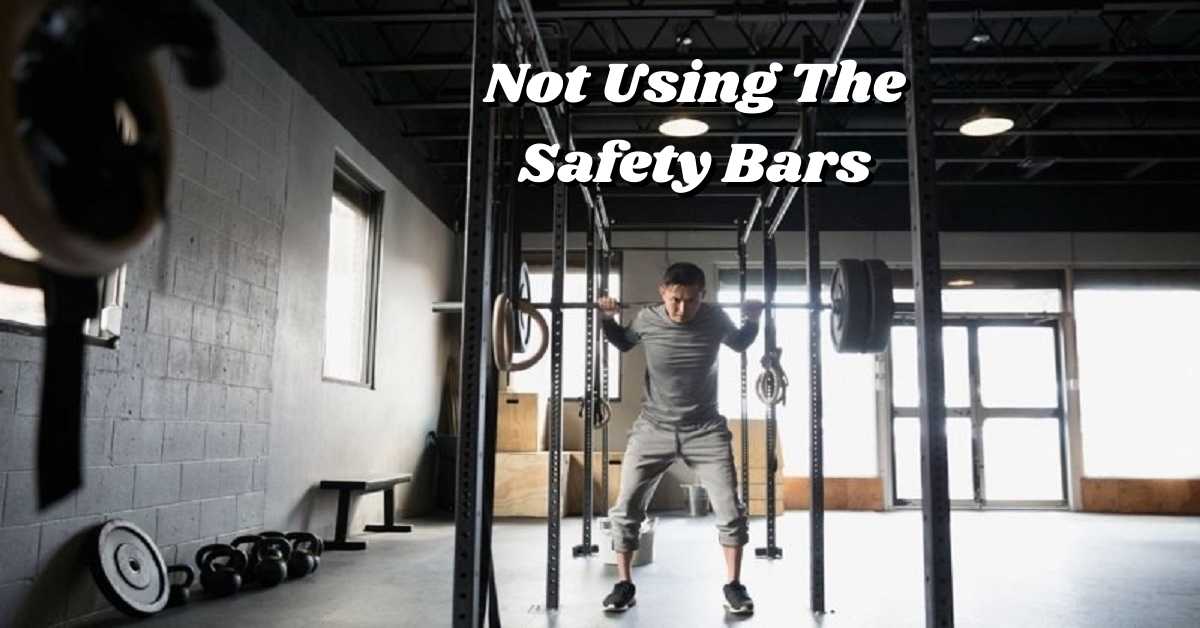
When squatting in a power rack, always utilize the safety bars to keep yourself safe. As you squat, raise them to a level that is slightly below the level at which the barbell would be when you reach the bottom of the movement. (If you grow them too high, your barbell will smash into the safety bars with every rep.) Set your goals. As a result, if you get too exhausted, you may place the bar on the safety bars and escape from the bottom of the ladder.
Keeping your lower back in a round shape
6 OF 10

When squatting, keep your spine as flat and neutral as possible. Rounding your lower back puts severe strain on your lumbar spine, which may cause it to rupture. This is referred known as a “butt-wink” in the squat world because, as you drop towards parallel, your butt tucks beneath and your lower back rounds.
It is NOT necessary to arch your lower back further to fight the butt wink. (I was guilty of the same error for many years.) Take a deep breath and exhale as forcefully as you can instead. Unrack the bar, get into your stance and then repeat. Your ribcage will descend, and your pelvic point will tilt upward as a result of this movement. Now squat while keeping this new rib cage and pelvic posture; you’ll use your whole core and alleviate strain on your lower back as you do so.
Not Making Use of Your Gluts
7 OF 10
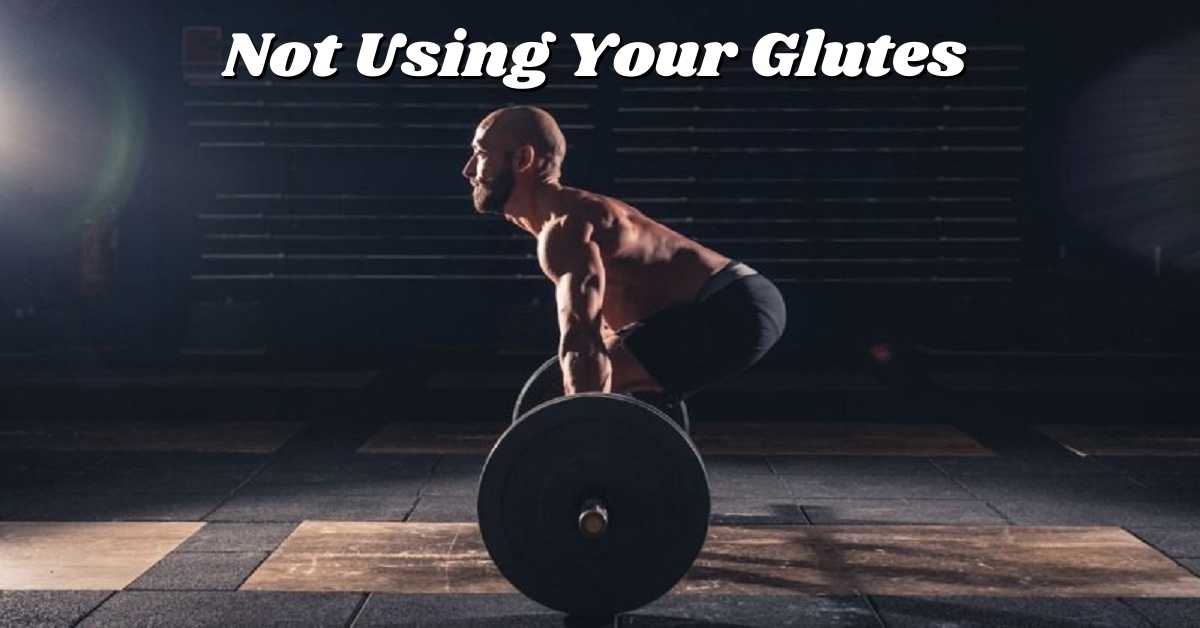
Your glutes are the largest and most powerful muscle in your lower extremities. When you squat, make use of them.
Think of spreading the ground apart with your feet as you begin to drive from the bottom up to engage your glutes and improve your power. After the exercise, squeeze your glutes to allow your hips to stretch fully.
Raising your hips too quickly is not recommended.
8 OF 10

Many men will raise their hips more quickly than their shoulders when starting from the bottom. This motion, which seems to be a Good Morning, may put a strain on your lumbar spine since you are extending with your lower back. Instead, lift your hips and shoulders at the exact moment to get the same result.
Using The Sissy Squat Pad
9 OF 10
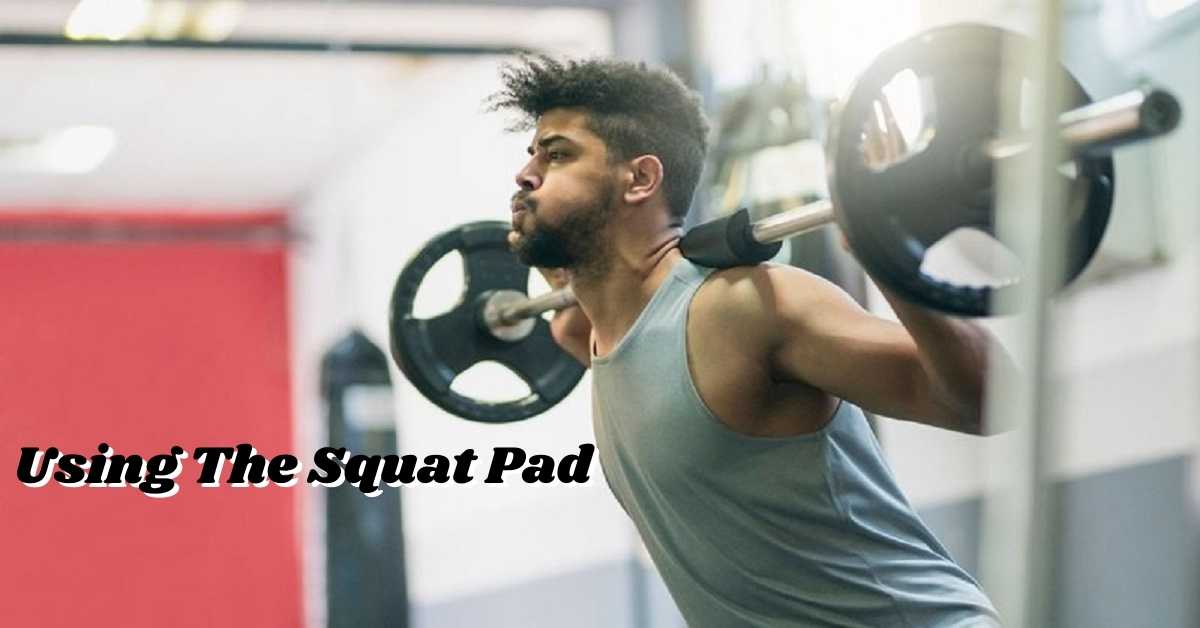
Just stay away from it. It takes away your sense of touch for the barbell, raises the barbell, and inhibits your upper traps from sustaining higher weights for an extended period. (It also gives the impression that you are weak.)
The fact that people have broken world records with nothing more than a bar on their backs proves that anything is possible.
Making Use of the Smith Machine
10 OF 10

The Smith Machine should never be squatted in. It confines you to a two-dimensional plane and forces you to move unnaturally. The squat also has the additional advantage of stabilizing the weight, which prevents you from reaping the full benefits of the exercise. Another purpose for squatting is to push our bodies to stabilize the weight they are carrying.
Final Conclusions For Sissy Squat
There isn’t much else to say at this point! In addition to being an excellent lower-body workout, it also works the abdominals to help with balance and stability. There is nothing more effective than training these two muscle groups together, particularly in improving your athletic performance and functional strength as an athlete. Consider adding the Sissy Squat to your existing workout routine. If you do, be sure to get the Element Fitness Si Squat equipment, as it will prove to be very useful in your training.
And before you strap yourself into the sissy squat machine and begin pounding out as many repetitions as you possibly can, be sure to get your head in the proper frame of mind!